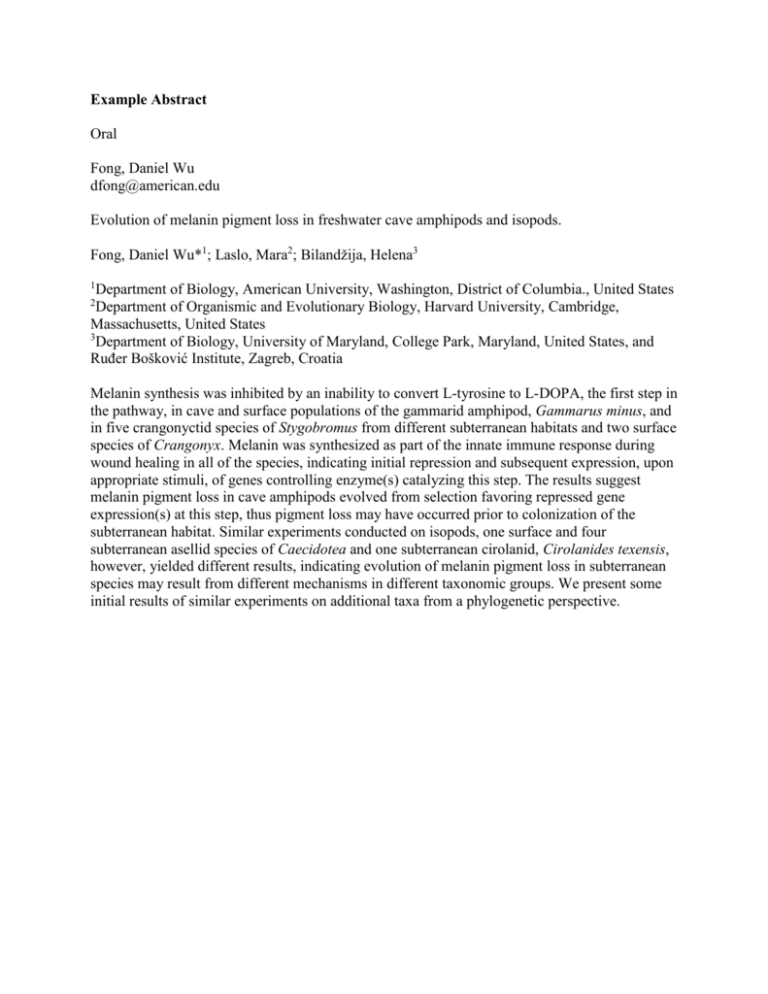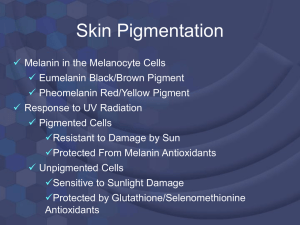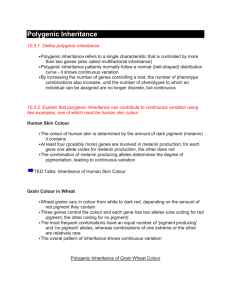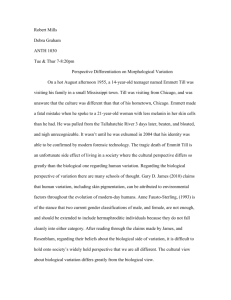Example Abstract
advertisement

Example Abstract Oral Fong, Daniel Wu dfong@american.edu Evolution of melanin pigment loss in freshwater cave amphipods and isopods. Fong, Daniel Wu*1; Laslo, Mara2; Bilandžija, Helena3 1 Department of Biology, American University, Washington, District of Columbia., United States Department of Organismic and Evolutionary Biology, Harvard University, Cambridge, Massachusetts, United States 3 Department of Biology, University of Maryland, College Park, Maryland, United States, and Ruđer Bošković Institute, Zagreb, Croatia 2 Melanin synthesis was inhibited by an inability to convert L-tyrosine to L-DOPA, the first step in the pathway, in cave and surface populations of the gammarid amphipod, Gammarus minus, and in five crangonyctid species of Stygobromus from different subterranean habitats and two surface species of Crangonyx. Melanin was synthesized as part of the innate immune response during wound healing in all of the species, indicating initial repression and subsequent expression, upon appropriate stimuli, of genes controlling enzyme(s) catalyzing this step. The results suggest melanin pigment loss in cave amphipods evolved from selection favoring repressed gene expression(s) at this step, thus pigment loss may have occurred prior to colonization of the subterranean habitat. Similar experiments conducted on isopods, one surface and four subterranean asellid species of Caecidotea and one subterranean cirolanid, Cirolanides texensis, however, yielded different results, indicating evolution of melanin pigment loss in subterranean species may result from different mechanisms in different taxonomic groups. We present some initial results of similar experiments on additional taxa from a phylogenetic perspective.











